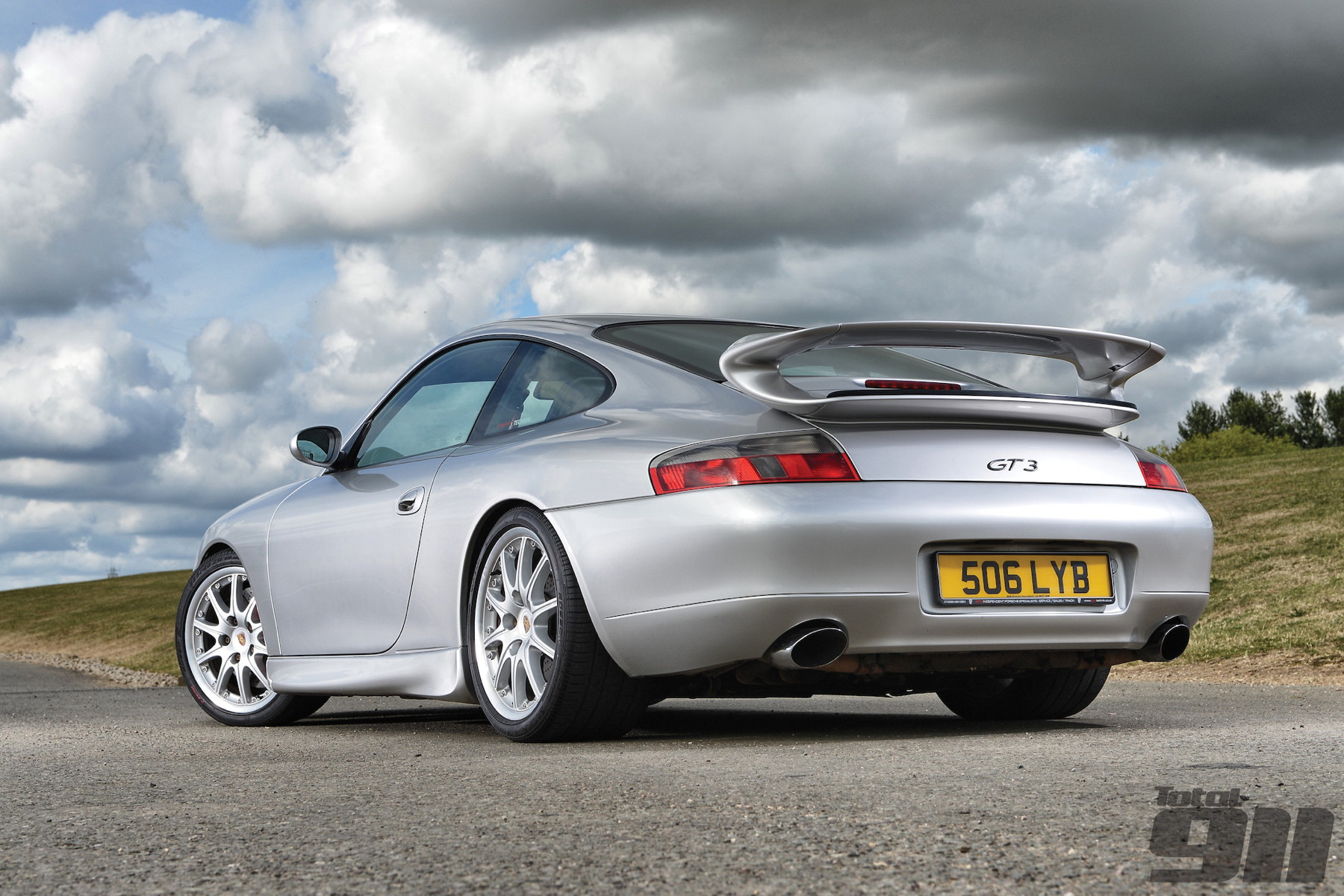GT3: A Porsche 911 History
Forget the switch to water-cooling, for Porsche enthusiasts, 1998 was really all about the release of the first Porsche 911 GT3. It marked the beginning of a new Neunelfer model range that has, in just 18 years, worked its way into Zuffenhausen legend.
Based on the Porsche 996 Carrera’s narrow body shell, the original 996 GT3 debuted in Cup car form at the tail end of 1998 before the road going version was launched at the 1999 Geneva Motor Show.
Unlike the standard 996 Carrera, it was bestowed with a dry sump, race-bred engine, the architecture of which could be traced back deep into the air-cooled era. Designed by legendary Porsche engineer, Hans Mezger, the 3.6-litre engine developed 365hp at a heady 7,200rpm.

Named after the FIA racing class it was designed for, the first 911 GT3 was still very much a road car (despite its motorsport-inspired moniker and drivetrain). As it turned out, this would be the key to the car’s success with 1,858 996.1 GT3s leaving the bespoke production line at Porsche’s Motorsport Department.
In 2003, the GT3 got its first update, bringing with it the 996 Gen2’s sharper front lights, new alloy wheels and a revised aerodynamic package that included a more modern rear wing design. The 3.6-litre ‘Mezger’ engine was also fettled, providing an improved 386hp at 7,400rpm.
While the 996.2 GT3 was no longer made in Weissach, the move to the Zuffenhausen factory allowed Porsche to increase production, with 2,313 Mark II cars being built between 2003 and 2005.

Demand was even higher for the first 997 GT3, launched in 2006. Still based on the narrow Carrera body shell, Andreas Preuninger’s department made the 997.1 the first GT3 to weigh less than its Carrera 2 counterpart, while further development of the 3.6-litre flat six yielded an even higher rev limit.
Now producing 412hp, the 997.1 GT3 was also the first to come equipped Porsche Active Stability Management (PASM), allowing less experienced drivers to experience the race-bred road car’s talents with the benefit of an electronic catch net.
In 2009, the GT3 got its biggest revision yet as part of the 997 platform’s Gen2 facelift. Along with refreshed styling, the flat six engine was expanded to 3,797cc and the compression ratio increased to 12.2:1, increasing power to 435hp at 7,900rpm.

Centre-lock wheels (a regular feature on the GT3 Cup cars since their debut in the 1999 race season) were also fitted to the road-going GT3 for the first time too, although 2010 model year cars needed to be recalled to fix a rear hub problem.
The Porsche 991 GT3 – launched at Geneva in 2013 – had even more tricks up its sleeves though. For the first time, the body shell was that of the wider Carrera 4, while the longer wheelbase of the 991 platform led Preuninger’s team to utilise a rear-wheel steering system jointly developed for the GT3 and 911 Turbo.
The drivetrain saw the greatest overhaul however. Gone was the now-legendary Mezger engine, replaced by high-revving version of the Carrera’s 9A1 engine while the manual gearbox was replaced with a PDK shifter (the performance of which was improved considerably to match the GT3’s race car credentials).

The move to the dual-clutch gearbox shocked many 911 enthusiasts and, with the 991.2 GT3 in the pipeline, it is expected that Porsche will bring the six-speed manual transmission back to the GT3 line-up as an option).
Due for launch early next year (possibly at Geneva), the Gen2 991 GT3 is also due to get the 4.0-litre powerplant from the current 911 GT3 RS. Complete with a lower 8,800rpm rev limit, the Rennsport’s engine is widely regarded as a more reliable unit that the 991.1 GT3’s engine (which suffered a few hugely publicised failures).
For more historical online features, check out our full selection of ‘Porsche 911 history’ articles now.


Comments (0)